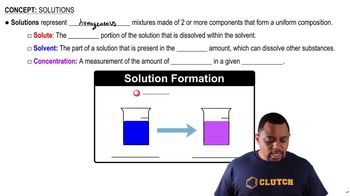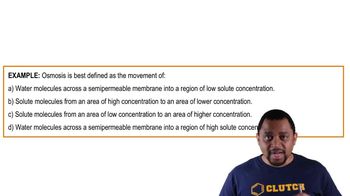Here are the essential concepts you must grasp in order to answer the question correctly.
Isotonic Solutions
An isotonic solution has the same solute concentration as another solution, typically referring to the comparison with bodily fluids like blood. In this case, a 0.15 M NaCl solution is isotonic with blood, meaning it does not cause net movement of water into or out of cells, maintaining cell shape and function.
Recommended video:
Hypotonic Solutions
A hypotonic solution has a lower solute concentration compared to another solution. Distilled water is considered hypotonic relative to blood because it has no solutes, leading to a net movement of water into cells. This can cause cells to swell and potentially burst due to osmotic pressure.
Recommended video:
Osmosis
Osmosis is the movement of water across a semipermeable membrane from an area of lower solute concentration to an area of higher solute concentration. Understanding osmosis is crucial for grasping how isotonic and hypotonic solutions affect cell volume and integrity, as it explains the direction of water movement in response to solute concentrations.
Recommended video:
 Verified step by step guidance
Verified step by step guidance


